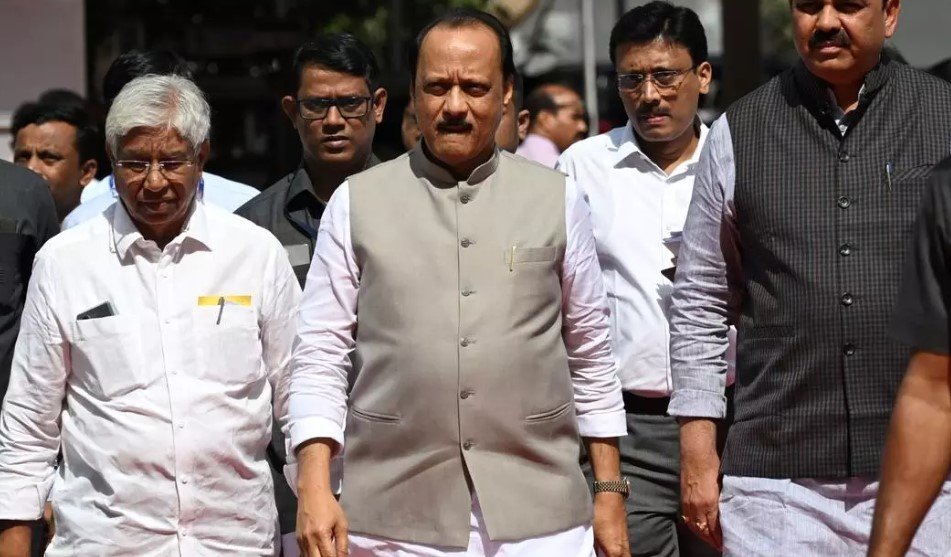Maharashtra’s Deputy Chief Minister Ajit Pawar tabled the state’s budget for 2025-26 on Monday, outlining a vision of aggressive economic growth, infrastructure expansion, and industrial development. The Mahayuti government aims to attract massive investments, create jobs, and boost the state’s economic output while addressing growing concerns over rising debt.
Mumbai’s Economy Set to Double by 2030
The financial nerve center of India, Mumbai, is poised for a major economic boost. Pawar announced that the city’s economy, currently valued at $140 billion, is projected to reach $300 billion by the end of the decade. This anticipated growth is fueled by significant investments in infrastructure, business-friendly policies, and a push to strengthen the Mumbai Metropolitan Region (MMR) as a global economic hub.
The government’s plans include expanding transportation networks, upgrading ports, and facilitating ease of doing business. With Maharashtra already contributing nearly 15% of India’s GDP, this ambitious roadmap could further solidify its position as the country’s top economic powerhouse.

Palghar to Get an Airport, Port to Be Operational by 2030
In a move that underscores Maharashtra’s infrastructure ambitions, Pawar revealed plans for a new airport in Palghar. This project aims to decongest Mumbai’s Chhatrapati Shivaji Maharaj International Airport and boost regional connectivity. Alongside this, the government has set 2030 as the target for making Palghar’s new port fully operational, enhancing Maharashtra’s trade and logistics capacity.
These infrastructure projects are expected to:
- Improve connectivity between Mumbai and northern Maharashtra.
- Strengthen Maharashtra’s supply chain network for exports and imports.
- Attract foreign and domestic investments in manufacturing and logistics.
The government is also looking at private sector participation to accelerate these developments, with land acquisition and feasibility studies already in progress.
₹20 Lakh Crore Investment Plan and 50 Lakh Jobs
Pawar’s budget speech highlighted an ambitious target—attracting ₹20 lakh crore in investments under the state’s new industrial policy. This initiative aims to generate employment for 50 lakh people across various sectors, including manufacturing, IT, logistics, and tourism.
The budget also proposes a series of incentives:
- Tax breaks for industries setting up in underdeveloped regions.
- Subsidies for MSMEs to boost local entrepreneurship.
- Infrastructure support for startups, including tech parks and incubation centers.
Despite these ambitious plans, opposition leaders have raised concerns about Maharashtra’s growing debt burden and the feasibility of executing such large-scale investments.
Maharashtra’s Growth Rate Outpaces National Average
According to the Economic Survey tabled on March 7, Maharashtra’s economy is projected to grow at 7.3% in 2024-25, surpassing the national estimate of 6.5%. This indicates strong economic resilience despite global uncertainties and inflationary pressures.
Per capita income in the state is also on the rise. The survey estimates it at ₹3,09,340 for 2024-25, up from ₹2,78,681 in the previous fiscal year. However, Maharashtra still lags behind Karnataka (₹3,32,926) and Tamil Nadu (₹3,15,220) in per capita income rankings, a gap the government aims to close with its new policies.
One of the key sectors driving this growth is manufacturing, with automotive, electronics, and pharmaceuticals seeing a steady increase in output. The state is also focusing on IT and digital innovation, with Mumbai and Pune emerging as major tech hubs.
Rising Debt and Political Opposition
While the budget’s ambitious plans have been welcomed by industry leaders, opposition voices, particularly from the Shiv Sena (UBT), have raised concerns about the state’s financial health. Sanjay Raut criticized the government, stating that Maharashtra is being crushed under debt and facing “financial anarchy.”
The state’s debt burden has been steadily increasing, with estimates suggesting that Maharashtra’s debt-to-GDP ratio is approaching 20%. Critics argue that while infrastructure projects and industrial policies promise growth, they also require substantial borrowing, which could strain public finances in the long run.
The government, however, remains optimistic, arguing that its investment-driven model will generate sufficient revenue to manage debt sustainably. With upcoming elections on the horizon, the execution of these budget promises will be closely watched.
